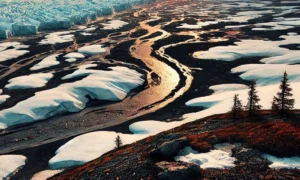Parker Solar Probe’s Historic Christmas Eve Flyby: Closer to the Sun Than Ever Before

NASA’s Parker Solar Probe is set to make its closest-ever approach to the Sun on December 24. At 6:53 a.m. EST, it will reportedly reach just 3.8 million miles (6.1 million kilometers) away from the solar surface, traveling at 430,000 mph (692,000 kph).
The spacecraft will gather first-time data from the Sun’s outer atmosphere that known as the corona.
The Parker Solar Probe has been developed by NASA’s Johns Hopkins Applied Physics Laboratory. It has already completed 21 solar flybys and seven Venus encounters. This will be its 22nd solar approach and closest flyby in the human history.
On Christmas Eve Parker Solar Probe will be making history by flying just 6.1 million kilometers from the Sun’s surface which would be 10 times closer than Mercury orbits the star.
The Parker Solar Probe will travel at an astonishing speed of 690,000 km/h. This speed achieved makes it the fastest spacecraft ever built, by humans!. To put that into perspective, it could travel from London to Paris in less than two seconds.
Also Read | Understanding Earth’s Environment – An Overview
The probe will study the mysterious corona, which is much hotter than the Sun’s surface. The data obtained will be used in trying to understand how the solar wind is accelerated.
Launched in 2018, Parker used multiple flybys of Venus to gradually slow down and move closer to the Sun.
The spacecraft is equipped with multiple data-capturing and observing instruments. This includes a camera to capture images of the Sun’s outer layer. And tools to measure electric and magnetic fields.
Since its launch, Parker has made groundbreaking discoveries one among which is the discovery of how the Sun’s magnetic fields might heat the corona.
Scientists are now eager to learn more about the fast and slow solar winds and how they are formed.
To protect itself during this close pass, Parker is shielded by a heat-resistant carbon-composite heat shield. This helps the spacecraft to keep its instruments at room temperature despite the Sun’s intense heat at the closest range.
Also Read | Study Reveals the Climate Change Link to Canada’s 2023 Wildfire Crisis
The entire flyby will last about a week, with Parker reaching its closest point to the Sun’s outer layer on December 24, just in time for Christmas.
The team will know if the flyby was successful by December 27, when the spacecraft sends a beacon back to Earth. The data will start coming in on New Year’s Day.
While Parker will continue to get closer to the Sun with each flyby, the Christmas Eve pass will be its closest approach in history till now.






